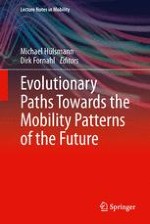2014 | OriginalPaper | Buchkapitel
What Do Potential Users Think About Electric Mobility?
verfasst von : Christian Hoffmann, Daniel Hinkeldein, Andreas Graff, Steffi Kramer
Erschienen in: Evolutionary Paths Towards the Mobility Patterns of the Future
Verlag: Springer Berlin Heidelberg
Aktivieren Sie unsere intelligente Suche, um passende Fachinhalte oder Patente zu finden.
Wählen Sie Textabschnitte aus um mit Künstlicher Intelligenz passenden Patente zu finden. powered by
Markieren Sie Textabschnitte, um KI-gestützt weitere passende Inhalte zu finden. powered by
